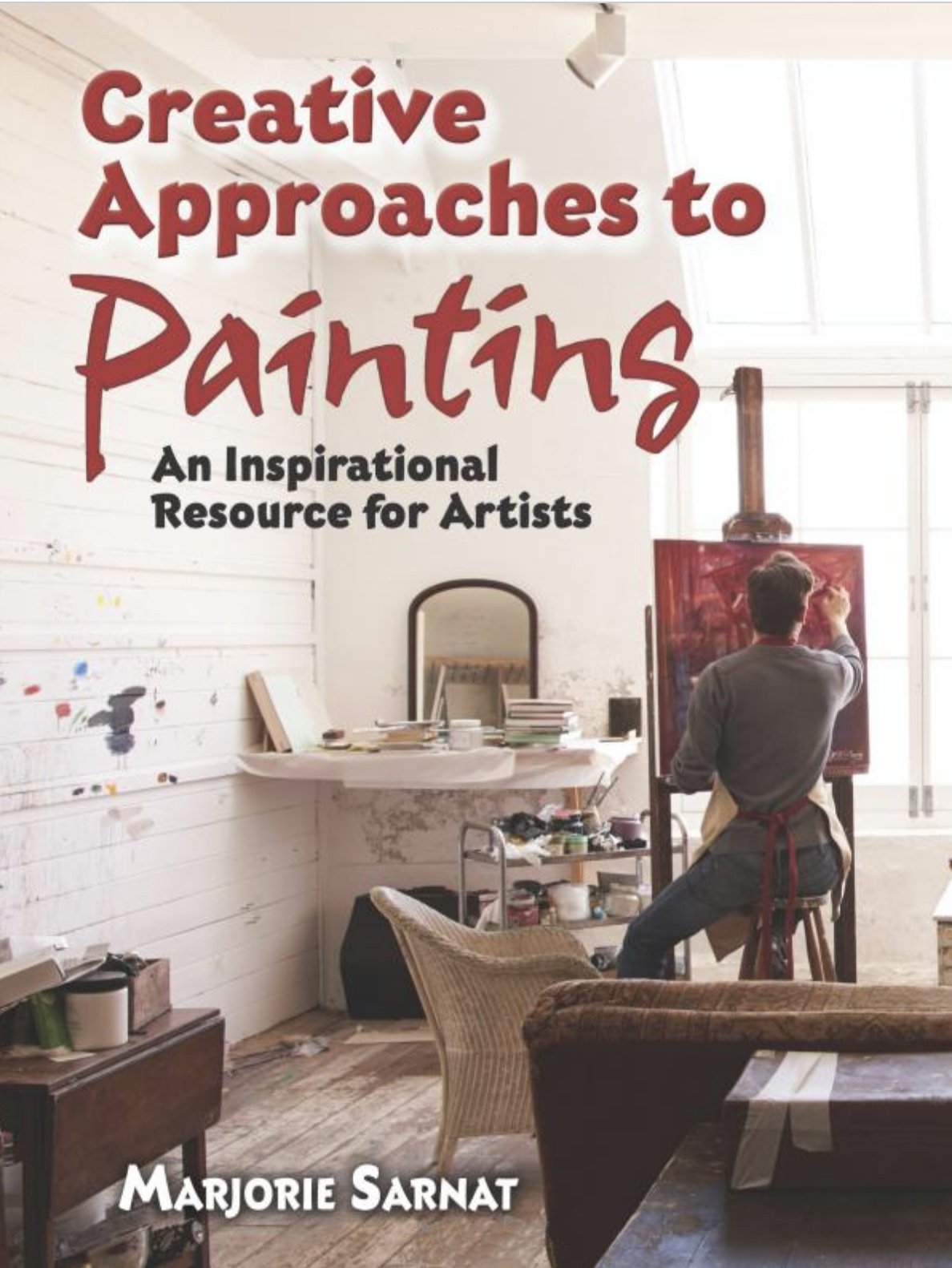Naming Paintings: A Picture is Worth a Few Good Words
"Tree of a Thousand Lights" by Marjorie Sarnat
What’s in a Name?
A painting’s title is an important part of its emotional appeal. It gives the viewer insight into what you, the artist, hopes the viewer will see or feel in your work. I think of titling a painting as writing a bit of poetry, using words that convey feelings and intangible concepts. Titles such as “Doorway to a Dream,” “Echoes in the Mountains,” and “To Catch a Moonbeam,” suggest a mood rather than a clear visual description.
Some art may work best with titles that convey visual description, such as “Study in Vermillion and Blue,” “Painting Outside the Lines,” or “Maple Trees After the Morning Snow.”
Viewers want to understand your visual narrative so they can get emotionally involved in the art experience you present to them. They want to know what you are showing them and why. Don’t fully explain it, but give them a clue. Leave a little ambiguity for the viewers to solve and make their own.
Different Strokes
Some artists have a knack for naming their artworks as an extension of their creative expression. For me it’s been a challenge to come up with titles that fit my art and elicit the emotional response I want. Like most artists, my work is visual, not verbal.
I know artists who don’t think about titles until their artworks are finished and they see what their paintings evoke. Other artists have something clearly in mind as they create, and form titles along with that idea. Most artists probably start thinking about a title somewhere in the middle stages of a painting, as their imagery takes shape. As is always true in art, there are no definite rules for titling a painting.
I’ve developed some approaches for generating titles:
Ask yourself what you want the viewer to know, see, or feel. When you formulate a title, consider whether the words help get that across to the viewer.
Write down some key words from your painting, such as “dandelions, pink shadows, abandoned barn, calm, and years gone by” Select the words that best suggest your painting and try to form a title. Maybe a single word “Dandelions” tells the story of abandonment. Maybe you want to put a haunting spin on your piece with the title “Quiet Barnyard Sounds” or a sad note, “The Silence Is Deafening,” or perhaps you simply wish to describe a picture, “Pink Tones Across a Field.”
Put yourself in the viewer’s shoes, and point those shoes toward your painting. The viewer doesn’t know anything about you or your painting. Will your title help him or her correctly respond to your artwork?
The sound of your words makes a difference. Alliteration, such as, “Runaway Rosebuds,” can help make your titles appealing and memorable.
Choose words that are comfortable to read and say, as well. I dislike words that are unfamiliar, such as “Whilom” and un-utterable, such as “Mr. Fzaeuhgbheau’s Isthmus.” However unique your title’s idea, use words your viewers can grasp.
Title Types
There are various kinds of titles. Experiment with them to see what fits your painting’s message best. Keep in mind that every painting has more than one good possibility.
Abstract Visual, such as “Checkerboard Swirl”
Descriptive, such as “Lake Michigan Looking North”
Intangible, such as “Optimism”
Metaphoric, such as “Bathing Beauty” (a pig in mud)
Mysterious, such as “Dancing With Myra” (with no person or creature in the picture)
Nostalgic, such as “When Grandma Was a Girl”
Numerical, such as “Surface #7”
Philosophical, such as “Do Unto Others”
Prismatic, such as “Turquoise Green”
Reference, such as “Alexandria Revisited”
Technical, such as “Encaustic on Weathered Wood”
Tenderhearted, such as “Alice’s First Puppy”
Combinations of these, such as “Alizarin Crimson At Sunrise,” work, too. You’ll likely think of other categories, as well. The examples above can help give you a jumpstart for generating your next title.
Become a Collector
Keep a reference file of potential painting titles. Include any words or phrases that intrigue or appeal to you. I call them “Title Makers.” Play with the words and make them your own. Find word inspiration in:
Art history, ancient and contemporary
Lines from movies
Literature – look for book titles, quotes, and lines from literature to adapt and make your own.
Names from mythology
Names from nature
Names of colors in fashion, cosmetics, wall paint, and more
Names of other artworks- never copy another artist’s titles, but keep some great ones on file as examples only
Names of things that have symbolic meaning, such as butterflies, pillars, mirrors, and clouds
Phrases you hear or read – jot down anything that’s evocative, provocative, insightful, beautiful, mysterious, shocking, and whatever moves you.
Poetry – scan for phrases and rhythms of word-sounds you like, and words that create moods, then adapt them to make them your own
Song lyrics – listen for rhythms of word-sounds and phrases that express emotion, and then adapt them to make them your own.
Spiritual and biblical references
Terms from astronomy
Words that describe feelings and moods – a thesaurus is a rich source
Words that describe intangible ideas – a thesaurus is a rich source
The Name of Your Game
As an artist, making a name for yourself involves creating great art and marketing it well. Coming up with good titles is part of the creative process. That means “making a name” is important in more than one way.
This article first appeared in my book Creative Approaches to Painting, by Marjorie Sarnat available on Amazon and online book retailers. Published by Dover Publications.


